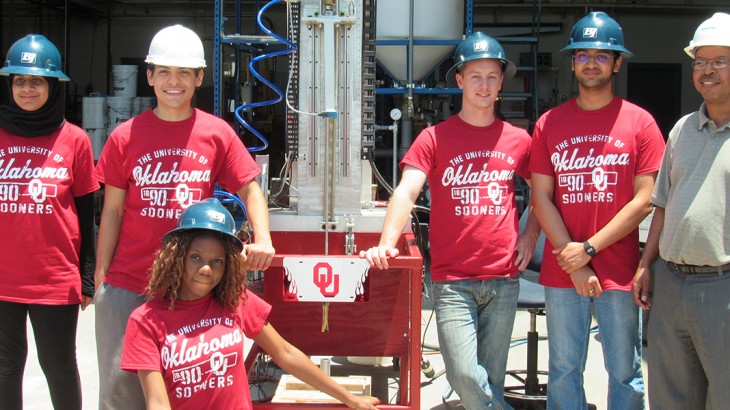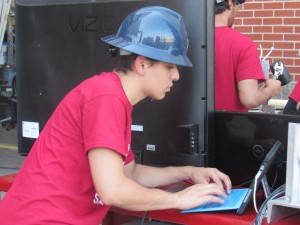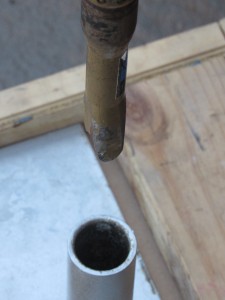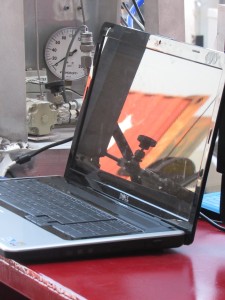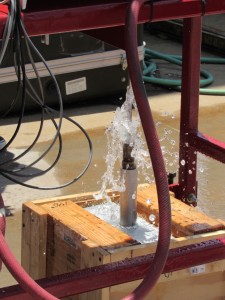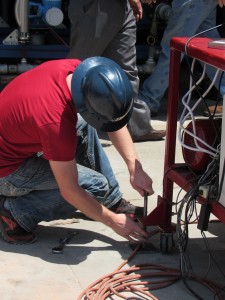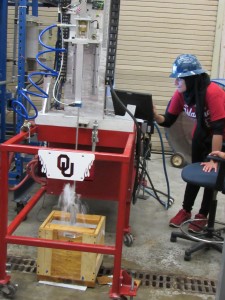The Drilling Systems Automation Technical Section (DSATS) of SPE International was established in 2008 to help accelerate the uptake of automation in the drilling industry. Their goal is to link surface machinery with downhole machines, tools and measurements through drilling systems automation (DSA) in order to improve safety and efficiency. To encourage new entrants into the drilling industry to consider creating and using automation tools and techniques, DSATS decided to challenge engineering students through participation in an in-depth competition. Last year was the inaugural event, and OU took home first place. This year, we look forward to carrying that distinction and honor forward.
Five students, Adaku Akabogu, Zeeneb Alsaihati, Hamid Alsousy, Vimlesh Bavadiya, and Kyle Gustafson, spent this past school year participating in the 2016 competition. The fall semester found them working on Phase I: reviewing competition guidelines and researching current industry practices, along with the advantages and shortcomings of each, in order to design and submit a proposal for an automated drilling unit by December 31. Ten universities submitted proposals, however, only five were invited to continue onto Phase II: Colorado School of Mines, Texas A&M, University of Texas, West Virginia University and, OU.
Upon their advancement to Phase II, each team was allowed up to $10,000 for rig and material costs, obtained through sponsorship. Teams spending beyond that limit would face penalty during the final judging. Each team was also required to submit monthly one-page reports that detailed key activities, summaries of data, significant findings, and other items of interest. As the semester moved along, our students built and tested their design. Without knowing what material they would be drilling into for the final competition, they had to factor in a number of details to ensure that, no matter what was encountered, their rig would function efficiently. They continued to test and make adjustments right up until the early morning hours on the day of the competition.
On June 15, a group of three judges traveled to OU’s Well Construction Technology Center to meet our team and watch them demonstrate their rig. To begin the visit, students gave a presentation that showed the judges their final design and what factors influenced their construction decisions. The judges, in turn, asked questions to determine how well the team understood engineering problems, how their equipment would handle proposed scenarios and to seek clarification on the how’s and why’s behind design decisions. Throughout the presentation, it was obvious to see that these students truly were a team. While they may have come in with certain specialties, each was fully aware of what their other team members contributed and the work involved with each aspect of the automated drilling process.
Finally, the big moment arrived, but not without an unforeseen circumstance, the sun. Reflections caused by it had an adverse effect on the laser sensors the students had built into the unit, preventing it from operating as intended. Once moved indoors, though, all went as expected and the unit successfully drilled through the sample provided.
Students will now write a paper that details the technical and economic considerations of their design, the experimental tests and results, recommendations for improvement to the design and testing process, recommendations for improvements by DSATS for the competition, and, lastly, areas of learning gained through the competition that were not covered in university course material. After that, we wait for the judges to make their determinations on the winners. If awarded first place, our team will be sponsored by DSATS to travel to SPE’s Annual Technical Conference and Exhibition in Dubai this fall where they will present their paper and display their operational rig.
